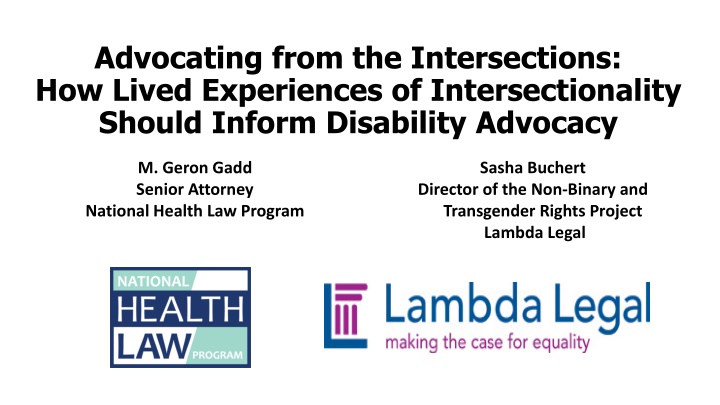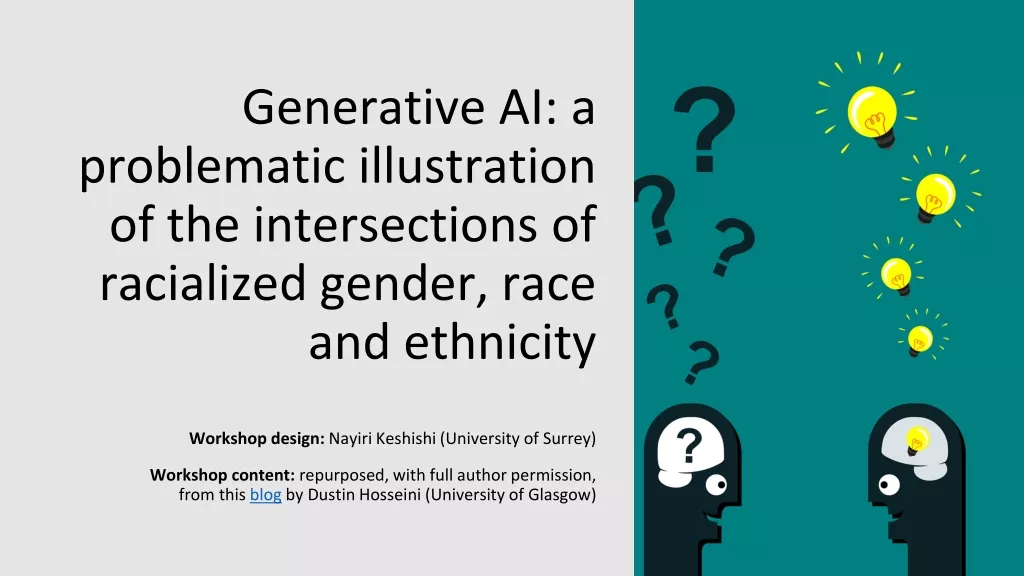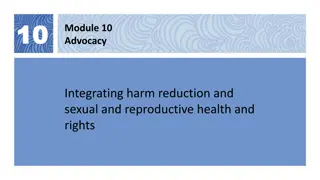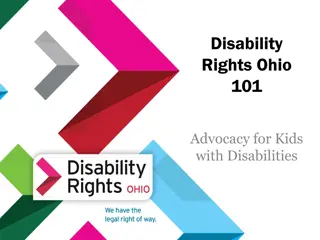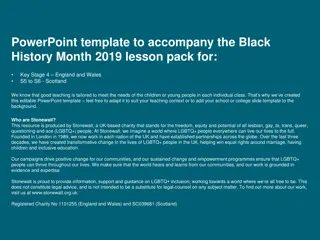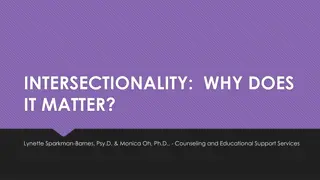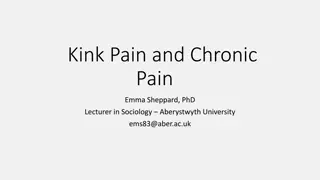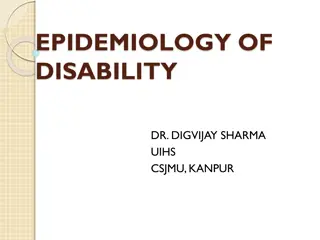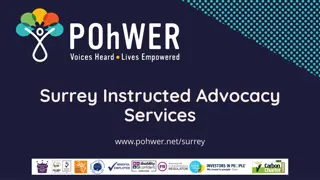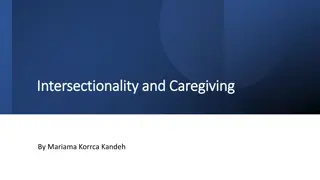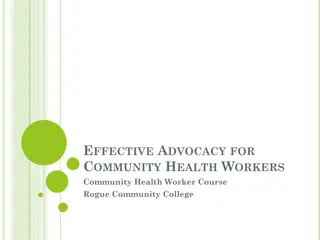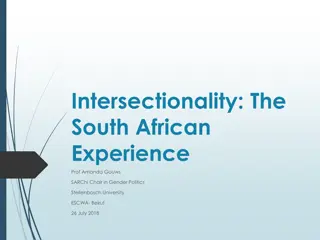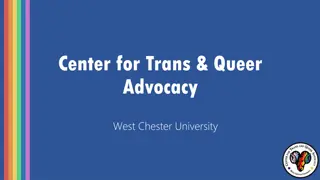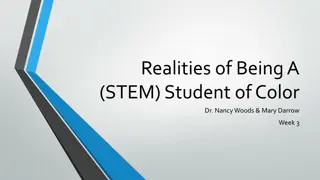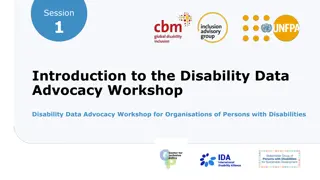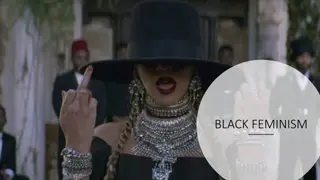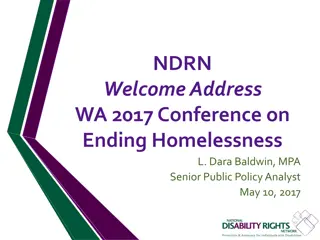Intersectionality in Disability Advocacy: Challenges and Opportunities
Explore the complexities of disability advocacy at the intersections of LGBTQ+ and BIPOC identities. Delve into lived experiences, core concepts, and potential tensions to enhance advocacy efforts. Address key issues like integration, reasonable accommodation, and the intersection of disability, HIV status, LGBTQ+ status, and BIPOC status in various sectors.
Download Presentation

Please find below an Image/Link to download the presentation.
The content on the website is provided AS IS for your information and personal use only. It may not be sold, licensed, or shared on other websites without obtaining consent from the author.If you encounter any issues during the download, it is possible that the publisher has removed the file from their server.
You are allowed to download the files provided on this website for personal or commercial use, subject to the condition that they are used lawfully. All files are the property of their respective owners.
The content on the website is provided AS IS for your information and personal use only. It may not be sold, licensed, or shared on other websites without obtaining consent from the author.
E N D
Presentation Transcript
Advocating from the Intersections: How Lived Experiences of Intersectionality Should Inform Disability Advocacy M. Geron Gadd Senior Attorney National Health Law Program Sasha Buchert Director of the Non-Binary and Transgender Rights Project Lambda Legal
Session Goals Identify nuances of disability advocacy for people who identify as LGBTQ+ and/or Black, Indigenous, and People of Color Note potential tensions in core legal concepts that force a prioritization of intersectional identities Identify ways that mindfulness of intersectional identities can strengthen disability advocacy on behalf of people who also identify as LGBTQ+ and/or BIPOC
Lived Experiences of Intersectionality: Commonality and Difference Helen L. v. DiDario, 46 F.3d 325, 335 (3d Cir. 1995): The ADA is intended to insure that qualified individuals receive services in a manner consistent with basic human dignity rather than a manner which shunts them aside, hides, and ignores them. Henrietta D. v. Bloomberg, 331 F.3d 261, 278 (2d Cir. 2003): The District Court found that the existing DASIS accommodative regime is unacceptably dysfunctional, and fails meaningfully to remedy these problems. [] The defendants instead contend, in essence, that their own bureaucracy is so defective that even healthy applicants cannot negotiate it, such that there is no disparate impact on the plaintiffs.
Core Concepts and Potential Tensions Integration Comparison required for disparate impact claims Reasonable accommodation and requests for same by people with intersectional identities Conflation of transgender identity and gender dysphoria
Intersection of Disability, HIV Status, LGBTQ+ status, and BIPOC status Data Collection Health Care Employment Housing Public Accommodations
Litigation and Other Advocacy Health Care for People Living with HIV Gender-Affirming Care Religious Refusals in Health Care Post-Dobbs Sexual and Reproductive Health Care Expanding Mental Health Services
Issues to Consider in Challenging Compound Discrimination Capacity Privacy Ethical Obligations to Client Forum Relief Requested Media
Practical Tips for Sensitive Advocacy Disclosure Framing of Claims Zealous Advocacy v. Meaningful Relief
Discussion What other ways does disability advocacy on behalf of people who identify as LGBTQ+ or BIPOC force a prioritization of identities? Where has your or others disability advocacy fallen short of appreciating clients full identities? How can disability advocacy take a more holistic approach to relief for people experiencing compound discrimination (e.g., LGBTQ+ clients who are unnecessarily institutionalized, BIPOC clients seeking supportive residential services, treatment of gender dysphoria)? What other things should disability advocates do better when advocating for clients with intersectional identities?
Contact Information NATIONAL HEALTH LAW PROGRAM M. Geron Gadd gadd@healthlaw.org LAMBDA LEGAL Sasha Buchert SBuchert@lambdalegal.org
